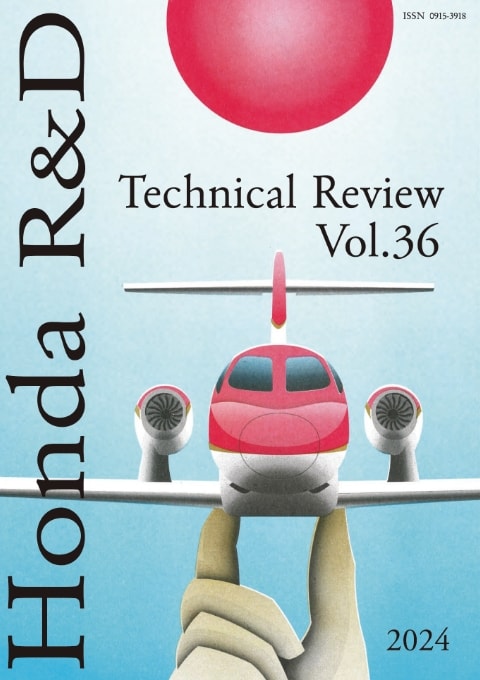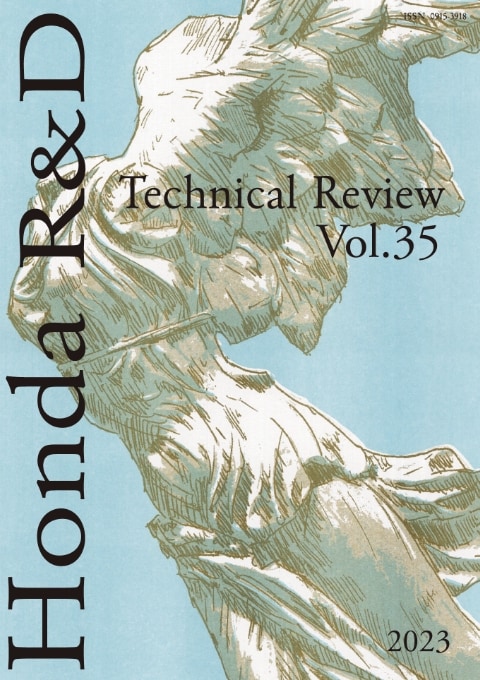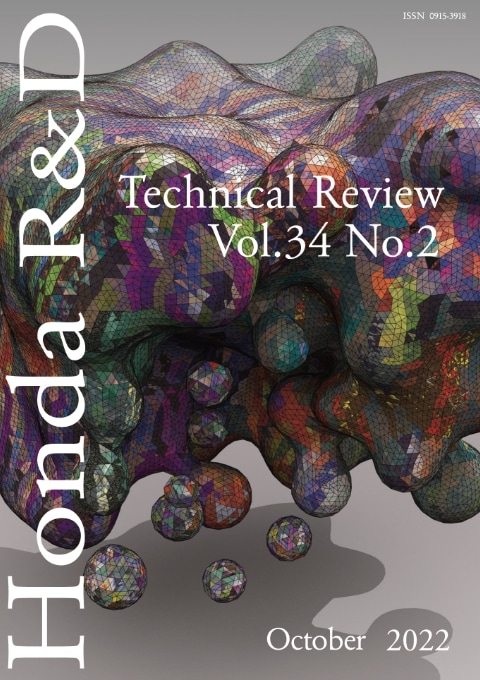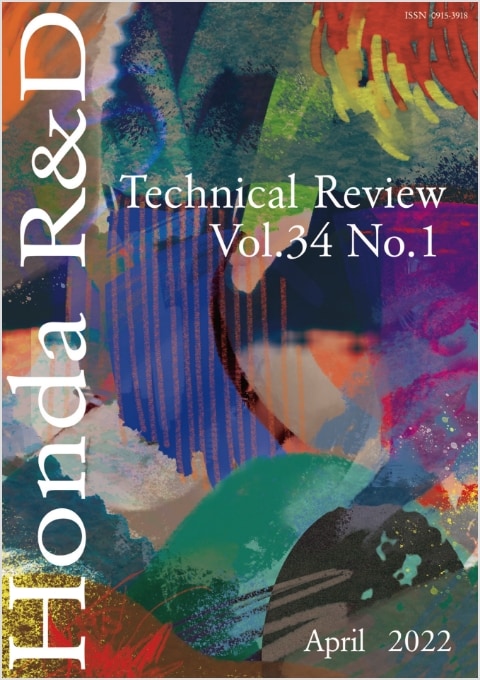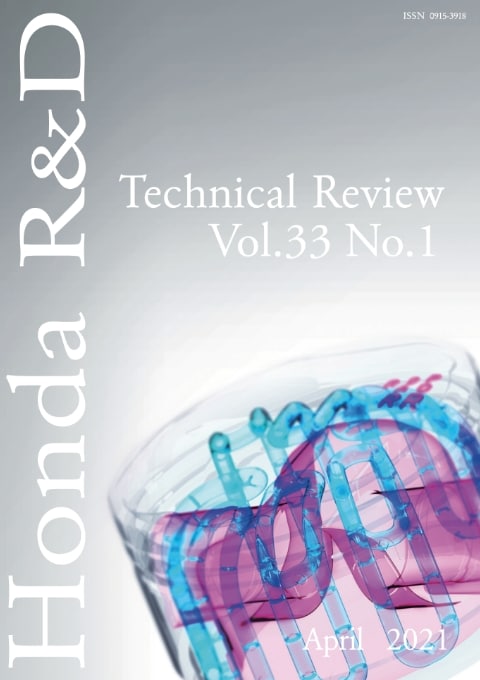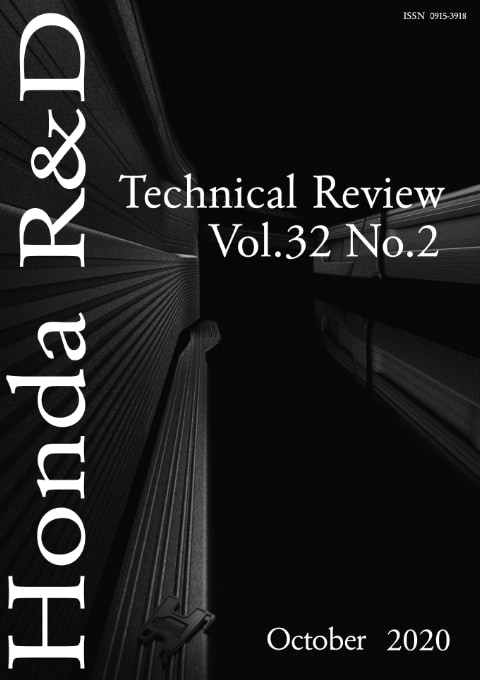Honda R&D Technical Review Vol.35
Honda R&D
Technical Review Vol.35
- The Blossoming of Leonardo da Vinci, Engineer
- Summary
“I am well aware that, because I am not a scholar, some presumptuous people will think that they can belittle me as an uneducated person. Bunch of ignoramuses themselves!” —From the Codex Atlanticus
In this statement by Leonardo da Vinci in his Codex Atlanticus, “uneducated person” or omo sanza lettere (uomo senza lettere in modern Italian) is a reference to his failure to understand Latin, which was the common language of the intellectual class of the time. Although many writers, including Dante and Petrarch, composed poetry and prose in the vernacular language (Italian), to qualify as a true man of culture, one had to write in Latin. The rather defensive quote from Leonardo above reveals his inferiority complex vis-a-vis the Latin language, which tormented him throughout his life.
Leonardo descended from a line of notaries, which was considered an intellectual class at the time, but was born out of wedlock (a bastard child) because his parents did not marry, probably because of their different class statuses. Ironically, the notaries’ union at the time did not admit illegitimate children, so it was clear from an early age that he would not inherit the family business. As a result, Leonardo grew up with an emotionally distant father, without access to Latin, the abacus, and other elements of a primary education that the sons of the wealthy at the time received.
Three times in Leonardo’s manuscripts, he makes note of the books currently in his possession. The first such mention is in the Codex Trivulzianus, where he lists five book titles: Donato, Lapidario, Plinjo, Abacho, and Morgante. The first of these, Donato, refers to a Latin grammar book by Donatus. It is interesting that Pliny’s Natural History and Luigi Pulci’s epic poem Morgante are accompanied by a grammar book and a book on calculation with the abaco (a kind of abacus). It is likely that Leonardo, who was in his mid-30s, taught himself out of necessity.
As this shows, his image as an “all-powerful genius” who can do anything without difficulty is not in line with reality. This paper will consider how Leonardo the engineer blossomed from such an inauspicious starting point.Hidehiro IKEGAMI
Details of papers - Styling Design of 2022 Dax 125
- Summary
Upon an initiative from Honda’s Thai Office, the Dax 125 has been developed as an addition to the “Redesigned Classic Models” such as C125, Monkey 125, and CT125. Since the combination of its small-diameter wheels and horizontally extended frame body resembled the long-bodied, small-sized dog, dachshund, the original DAX was named as DAX Honda in Japan. When designing the style of this model, the T-shaped pressed steel frame having a long beam extending from the steering head pipe to the seat was deemed as the key element to emphasize its uniqueness. We imagined various types of use such as “going out for a ride like taking a lighthearted walk wearing sneakers” and “enjoying a ride with family members on weekends.” With that in mind, we chose “family & leisure sneakers” as the key words for the development of the product. In this project, rather than producing a clay model, we have used VR, which allows virtual viewing of the model from 3D CAD data, to acquire an image picture of the entire vehicle from an early period of styling design. Although it was a challenge to maintain the original product image in the new product having a larger engine displacement and higher performance, with the efforts of project members in Thailand and Japan focused on the common goal, the beautiful new model featuring the gentle and modern taste has been realized.
Yuichi YOKOYAMA、Takamasa SUMASU、Worawit CHAWALITNIMITKUL
Details of papers - Turbocharged and Naturally Aspirated Gasoline Direct Injection V6 Engines with Common Architecture based on New Valve Train System
- Summary
Two gasoline direct injection V6 engines were developed using a new valve train architecture with a common engine geometry: a turbocharged engine aimed at enhancing power performance, and a naturally aspirated engine aimed at enhancing environmental performance. Variable Timing Control for intake and exhaust was adopted to improve boost pressure responsivity for the turbocharged engine and thermal efficiency for the naturally aspirated engine. To maintain an engine size comparable to that of the previous engine, a new compact valve train was developed, combining a valve lifter-based Variable Cylinder Management system with built-in cylinder deactivation switching mechanism, hydraulic lash adjusters, and roller rocker arms. With these changes, these systems were equipped at the same cylinder head size as the previous SOHC engine. Furthermore, the new valve train allowed for a common engine geometry between the turbocharged and naturally aspirated engines, including cylinder head structure and rotational axis positions of the crank shaft and cam shafts, to help ensure commonality for the timing belt drive system and other systems. A single twin-scroll turbocharger was adopted for the turbocharged engine, achieving a maximum power of 265 kW and maximum torque of 480 Nm. The naturally aspirated engine features a fuel injection system with fuel pressure increased to 30 MPa, and a vehicle with the engine achieved an LEV III SULEV30 rating, producing PM of 1 mg/mile.
Shotaro TAKI、Satoshi KAWAWA、Kazumasa ISHII、Akio IMAKITA、Yukio KONISHI、Yuki TOMITANI
Details of papers - Technology for High-speed Manufacturing of High-pressure Hydrogen Tank by 14-axis Simultaneous Control Filament Winding Machine
- Summary
In the interest of reducing the cost of high-pressure hydrogen tanks, a 14-axis simultaneous control filament winding system was developed that shortens the filament winding process time and stabilizes tank pressure strength.
To accelerate the process, a mechanism capable of high-speed helical tumble winding was adopted, speeding up the process to approximately five times the conventional carbon fiber feeding speed. With the increased speed, a reservoir was implemented to keep the machine’s band path distance constant at all times, allowing for reduced band tension fluctuations in winding. In addition, feed rollers capable of widening tow prepreg for feeding at a stable bandwidth were developed, along with a control method for the rollers, to help enhance carbon fiber reinforced plastic laminate quality. Upon studying the cost reduction effects of the increased speed, the machine was configured for dual head filament winding.
As a result, process time was reduced by approximately 80% compared with the conventional process, and the effectiveness of the machine was confirmed to reduce variance in pressure resistance for the high-pressure hydrogen tanks.Koei FUJIKI、Kosuke TATSUSHIMA、Masaru NAKANISHI、Kenta UMETSU、Andreas REIMANN
Details of papers - Modeling of Efficient Lifetime Prediction for Lithium-ion Battery Employing Orthogonal Array
- Summary
Estimation of lithium-ion battery durability by modeling that simulates performance degradation is an important technology during the initial phase of development of electrified products. For this study, a low-cost, highly efficient technique for creating a model was investigated by applying the orthogonal array used in quality engineering to the process of creating a performance degradation prediction model. As a result, it was found that for the storage durability test, it was productive to apply an experimental design that uses an L16 orthogonal array, whereas for the cycle durability test, it was productive to apply an experimental design that uses an L27 orthogonal array. It was also found that by fitting to the test results, when the storage degradation coefficient is modeled by expressing it with the state of charge and temperature in a quadratic linear equation together with an interaction term, and the cycle degradation coefficient is modeled by expressing it with the state of charge, window of operating state of charge, temperature, charge current, and discharge current in a first-order linear equation, then it was possible to simulate the results of accelerated durability testing highly accurately with a deviation of 1.3%. The method of modeling discussed in this paper reduced the amount of testing necessary in the conventional, factorial experiment method by 58% while realizing an equivalent level of accuracy, confirming that enhancement of experiment efficiency can be expected.
Kaoru OMICHI、Tadashi KAGA、Takumi NISHIMURA、Naoya AIDA、Yuki TOMINAGA
Details of papers - Development of Multi-disciplinary Optimization Design Assist System for Gas Turbine Rotor Blades
- Summary
An optimization design assist system was developed for gas turbine rotor blade design that integrates an optimization algorithm into a workflow automating blade shape creation and aerodynamic and structural analysis. In recent years, thinner blades and higher loads have been used to enhance aerodynamic performance. In view of the impact of increased blade shape design sensitivity on structural mechanics, the system was designed to enhance structural mechanics evaluation functions. This paper presents an overview of the system and example cases of its application to the design of a centrifugal compressor rotor blade and a radial turbine rotor blade. By introducing the system, engineers were able to consider a wide variety of design elements in aerodynamic and structural design, as well as to propose suitable solutions that simultaneously satisfy both aerodynamic and structural design goals and to present quantitative design prospects.
Taku AOKI、Toshihiro KAMATSUCHI、Takashi SAKAKIBARA、Gaku OKUBO、Hisato TANAKA、Sebastian SCHMITT
Details of papers - Knocking Mitigation of Gasoline Engine by Reduction of Unburned Area Using Pre-chamber Jet Combustion
- Summary
Analysis was conducted of knocking mitigation when using passive pre-chamber jet combustion as compared to a gasoline engine with stoichiometric spark ignition combustion. Jets emitting from the pre-chamber enabled the propagation flame to rapidly reach the bore end, shortening the combustion duration. This reduced the unburned area of end-gas in the latter half of combustion and mitigated knocking. It was also shown that by creating more nozzles and thus increasing the number of jets, the unburned field is partitioned and made smaller, which suppresses auto-ignition and mitigates knocking. It was confirmed that setting specifications to maximize the knocking mitigation effect and thermal efficiency can raise the compression ratio by 1.8 and increase thermal efficiency by 1.1 pts.
Hirokazu ANDO、Yusuke SHINTANI、Hiroki KOBAYASHI、Ryosuke SHIINA、Noritaka KIMURA
Details of papers - A Model for Turbulent Flame Speed Based on Theory of Turbulent Flame Brush Thickness Dynamics
- Summary
In this work, a new theory is proposed for determining the instantaneous turbulent flame speed using a simplified but physics-based approximation of the dynamics of the transient turbulent flame brush thickness. A summary of the main points of this new model’s derivation are reviewed, which can be thought of as an extension of Damköhler’s steady state flame speed model to include the effect of the transient development of a turbulent flame. The resulting flame brush thickness dynamics model is compared against historical measurements available in the literature as well as against 3D realizations of resolved turbulent flame propagation using the instantaneous G-equation. This comparison shows the newly derived model can describe both the transient and steady state turbulent flame speed across a range of conditions with a singular modeling form and is therefore expected to find utility as turbulent flame speed model for combustion devices where representation of the developing turbulent flame is of crucial importance.
Phillip AQUINO
Details of papers - Hermetically Sealed Cooling Structure for Small High-current Density Motors
- Summary
A motor cooling structure for electrification vehicle drive motors capable of absorbing the increases in heat generation from miniaturization with high current has been developed. The conventional cooling method involves dripping refrigerant onto exposed parts of the stator coil, relying on thermal conduction to indirectly cool the coil inside the stator slots where the refrigerant cannot reach. In this study, we have established a technology that directly cools the entire coil by hermetically sealing the stator to immerse the entire coil in automatic transmission fluid. Using a prototype motor, the technology has been demonstrated to have more than twice the cooling performance of the conventional cooling method. It was also confirmed that further enhancements in cooling performance can be expected by increasing refrigerant flow rate.
Shinji KATO、Taku UEDA、Kentaro FUKUI、Fumiya NISHII
Details of papers - Influence of Inverter Surge Voltage Waveform and Environmental Change on Partial Discharge Phenomena in Automobile Main Motor Magnet Wire
- Summary
Evaluation was conducted of the partial discharge inception voltage resulting from inverter surge voltage in the magnet wire, also known as winding wire, of the main motor used in an electric-powered vehicle.
Having clarified the influence of the waveform on partial discharge, the voltage waveform used for evaluation was configured to include waveform conditions under which partial discharge is most likely to occur during operation of the inverter in an electric-powered vehicle. With use of the inverter surge voltage, it was found that the partial discharge inception voltage rose 22% higher than the usual sine wave voltage. Envisioning the environment in which the main motor would be used, the influence of the environmental factors of ambient temperature, atmospheric pressure, and relative humidity on the partial discharge phenomena was also clarified. The use of inverter surge voltage for evaluation based on the above results yields the expectation that a rise in the partial discharge inception voltage can be expected. It also indicated that insulation design that takes the influence of the environmental factors into consideration can contribute to a reduction in the thickness of the insulation film.Makoto KUBOTA、Yuta ITO、Takeshi YANAGISAWA、Yoshito TSUKAMOTO、Riku INABA
Details of papers - Fuel Cell Stack Power Prediction Model Using Gaussian Process Regression Model
- Summary
A fuel cell stack power prediction model that takes into consideration the various stack control parameters is important in the optimization design of the controls for each item of auxiliary equipment in a system equivalent to that of an actual vehicle. However, creating a model for quantitative prediction of stack power requires large amounts of data concerning the materials and structure inside the fuel cell. Moreover, since the internal phenomena are complex, large-scale modeling is necessary. For this research, a design of experiment method known as the space filling technique was used to acquire data efficiently. With the acquired data as a basis, the use of Gaussian process regression made it possible to create a model capable of predicting stack performance as well as the temperature and pressure in the various parts of the stack in a short computation time. It was also made clear that this model could be used to calculate operating conditions that would maximize stack power, and verification by testing showed that it would be possible to obtain a power prediction model that could be used to investigate stack performance from a limited amount of test data.
Ryo KOBAYASHI、Koichiro FURUSAWA、Kensuke UMEZAWA
Details of papers
- About Honda R&D
- Honda Philosophy
- Top Message
- Mission
- Organization
- Company Overview and Affiliates
- Members
- Award
- R&D Research Paper




